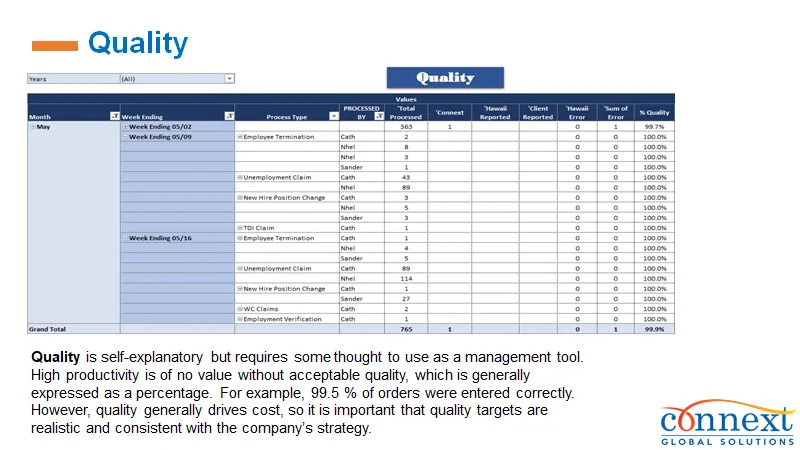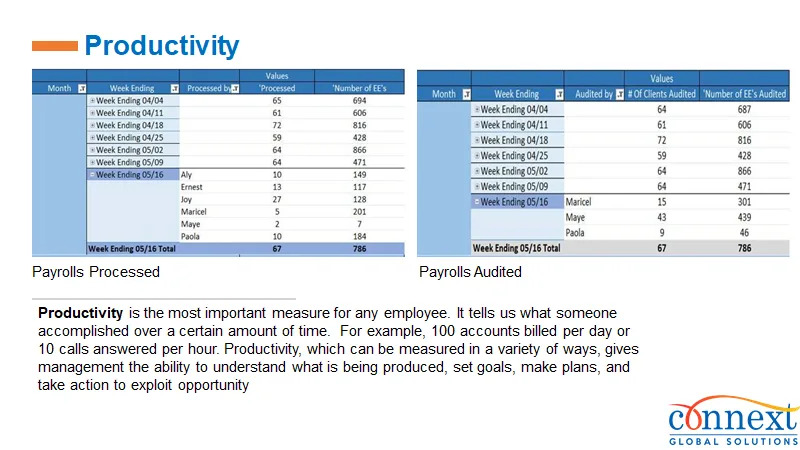Verifying medical licenses is essential to healthcare compliance, yet it’s often time-consuming and error-prone, pulling valuable resources away from patient care and core operations. The process is complex, demanding, and prone to mistakes, burdening your internal teams and slowing down workflows.
But what if there was a way to streamline this critical task? Offshoring medical licensing verification offers more than just cost savings; it delivers precision, speed, and scalability. This strategic approach not only enhances operational efficiency and compliance but also frees up your staff (nurses, physician assistants) to focus on what truly matters: patient care.
In this article, we’ll explore how dedicated offshore teams can transform your administrative processes, ensure accuracy and scalability while lightening the load on your internal resources.
Why Medical Licensing Verification is More Complex Than It Looks
Medical licensing verification may seem straightforward at first, but the process is far from simple. Navigating the complexities involved in this crucial task can overwhelm even the most efficient administrative teams. Let’s break down the challenges healthcare providers face when it comes to medical licensing verification.
1. Varying State Requirements
Each state has its licensing board with distinct rules and regulations. These requirements can change frequently, making it difficult for healthcare organizations to stay current. Healthcare administrators must track updates across multiple states and ensure compliance with each one.
2. Primary Source Verification (PSV) Complexity
To ensure thorough license verification, healthcare organizations must verify credentials directly with issuing institutions, such as medical schools, residency programs, and licensing boards. This process —Primary Source Verification (PSV) — is meticulous and often involves dealing with slow response times and varying systems.
3. Managing Multiple Credential Sources
Beyond the initial licensing process, healthcare providers must continuously verify credentials and license status against several databases, including:
- National Practitioner Data Bank (NPDB)
- Office of Inspector General (OIG) Exclusions List
- Drug Enforcement Administration (DEA) registrations
4. Volume Spikes During Periods of Growth
Healthcare organizations often experience spikes in verification volume, such as during seasonal hiring or periods of rapid expansion. These surges can strain internal resources and disrupt operations.
5. The High Stakes of Non-Compliance
Errors or delays in medical licensing verification can have severe consequences:
- Legal penalties
- Reputational damage
- Compromised patient safety
Non-compliance is costly and puts the entire healthcare organization at risk. Healthcare administrators must ensure licensing verification is handled promptly and accurately.
6. Staff Burnout and Time Misallocation
Assigning administrative tasks like medical licensing verification to skilled staff can lead to burnout. When highly trained employees are pulled away from patient care or strategic initiatives, productivity suffers, and staff morale decreases.
Offshoring Medical Licensing Verification: What It Really Means
For healthcare organizations, medical licensing verification is a compliance-critical function that demands speed, accuracy, and consistency.
This approach focuses on building dedicated remote teams that specialize in licensing compliance and operate as an extension of your internal staff. Done right, it’s a smarter, more agile way to manage an increasingly complex process. Here’s how:
- Specialized Expertise: Remote teams can be trained in the nuances of state-specific licensing rules, board certifications, and Primary Source Verification (PSV). Over time, they become highly efficient and deeply knowledgeable, raising the standard of compliance.
- Agility Without Red Tape: Organizations can scale their verification capacity without going through lengthy internal hiring cycles. This flexibility is especially valuable during periods when adding headcount isn’t an option.
- Aligned With Your Systems: Offshore teams are embedded within your workflows and tech stack, maintaining continuity across platforms and processes. It’s a low-friction way to boost efficiency without disrupting what’s already working.
- Better Use of Internal Talent: Offloading routine verification frees up in-house staff to focus on strategic projects, provider engagement, and care-driven initiatives. It’s about letting your best people work at the top of their license.
With a dedicated offshore team, organizations gain the ability to manage licensure process demands more consistently without slowing down or overextending internal staff. The added capacity supports faster turnaround times, improved accuracy, and stronger compliance across the board. And because these teams work within your systems, they deliver results without disrupting workflows or increasing headcount.
Inside an Offshore Licensing Verification Team: How It Works
Outsourcing medical licensing verification to an offshore team offers significant advantages in ensuring compliance, enhancing efficiency, and supporting healthcare operations. The key to success lies in a well-structured, step-by-step process, where each task is executed meticulously to meet both regulatory standards and your organization’s unique needs.
How Offshore Licensing Verification Teams Operate
A dedicated offshore medical licensing verification team works as an extension of your organization. The following outlines how these teams contribute to a more efficient, accurate, and secure licensing verification process.
1. Secure Data Intake and Initial Review
The verification process begins with the secure intake of provider data. Information is received through a protected virtual desktop environment, ensuring confidentiality. The offshore team conducts an initial review to verify that all required documentation is complete. Identifying gaps early helps minimize delays later in the process.
2. Expert State Board Navigation
Each state medical board has its own unique process and digital platform. Offshore teams are trained to understand and navigate these systems efficiently, ensuring that the verification process is swift and accurate. This expertise is essential for minimizing errors and ensuring that the right data is retrieved on time.
3. Comprehensive Primary Source Verification (PSV)
Offshore teams are responsible for conducting primary source verification (PSV), which includes contacting educational institutions, past employers, licensing boards, and other key regulatory bodies, such as the NPDB, OIG, and DEA. Each communication and verification letter is carefully documented, and follow-ups are managed as needed to ensure responses are timely and complete.
4. Technology-Enabled Efficiency
By leveraging credentialing software, checklists, shared dashboards, and automation tools, offshore teams enhance the overall efficiency of the licensing verification process. These technologies enable teams to complete tasks faster and more accurately, allowing them to focus on more complex tasks that require detailed attention. This ensures transparency and accountability throughout the process.
5. Error Handling and Escalation
When discrepancies or issues arise, they are immediately flagged for review. The offshore team follows the client’s established protocols for resolution, ensuring that issues are addressed promptly and appropriately. A clear escalation process is in place for more complex problems, guaranteeing they are handled with the highest level of attention and expertise.
6. Detailed Audit Trail and Documentation
Each step of the licensing verification process is meticulously documented, creating a comprehensive audit trail that ensures full compliance with regulatory standards. This documentation is vital for internal audits and external reviews, offering transparency and easy tracking of the verification process.
7. Proactive Renewal Monitoring
Offshore teams manage ongoing license renewals by proactively tracking deadlines and initiating the renewal process ahead of time, ensuring that licenses remain active and compliant without any lapses that could disrupt operations.
Strategic Benefits of Offshoring Medical Licensing Verification
Offshoring medical licensing verification delivers a variety of benefits that extend well beyond simple task delegation. With dedicated offshore teams, healthcare organizations can enhance accuracy, speed, scalability, and operational focus.
- Enhanced Accuracy & Compliance: Offshore teams bring specialized expertise, reducing errors and ensuring better compliance. This leads to stronger audit trials and minimizes risks of non-compliance, making the process more reliable.
- Accelerated Speed & Efficiency: With offshore teams dedicated solely to verification, turnaround times are much faster than when internal staff juggle multiple tasks. Streamlining this process ensures timely licensing renewals and avoids delays.
- Unparalleled Scalability: Offshoring allows you to quickly scale your verification capacity without the need for new hires or lengthy training. Whether facing growth or fluctuating needs, offshore teams can easily adjust to handle the demand.
- Focus on Core Competencies: By offshoring, internal teams can focus on higher-priority tasks like patient care and strategic growth, boosting overall productivity and supporting organizational goals.
- Optimized Cost-Effectiveness: While cost savings are a factor, the main advantage of offshoring lies in its efficiency. The reduction in administrative burden and the ability to allocate resources more effectively makes the process valuable, with cost savings as an added benefit.
- Adapting to Hiring Challenges: Facing a hiring freeze? Offshoring offers a solution by providing the flexibility to expand verification teams without adding permanent headcount.
- Increasing Team Capacity without Adding Headcount: Offshoring enables organizations to increase capacity without the overhead of traditional hiring processes. This flexible solution supports growth and adapts to changing needs without increasing headcount.
Offshoring medical licensing verification offers a strategic, scalable solution for improving efficiency, compliance, and resource allocation. By leveraging offshore teams, healthcare organizations can maintain high standards while optimizing operations.
Is Offshoring Medical Licensing Verification Secure?
When dealing with sensitive provider data, security is a non-negotiable. For many healthcare organizations, the idea of offshoring medical licensing verification raises questions about data protection. But with the right structure and safeguards in place, offshoring can be just as secure — if not more — than in-house systems.
Secure by Design
A strong offshoring partner should use a security-first approach. Here’s how Connext helps protect client data during medical licensing verification:
- No Local Data Storage: Offshore team members don’t store any data on local machines. All work happens within a secure, access-controlled system.
- Virtual Desktop Infrastructure (VDI): Teams log into client-controlled environments. This setup keeps all data within your system, preventing local downloads or unauthorized access.
- Strict Access Protocols: Biometric controls and secure facilities limit physical access. All team members undergo comprehensive background checks before onboarding.
- 24/7 IT Monitoring: Around-the-clock support and system surveillance ensure any threats are quickly addressed.
- Paperless Environment: Eliminating physical paperwork further reduces risk and supports HIPAA-aligned workflows.
Built for Healthcare Standards
These security practices align with healthcare data regulations and industry best practices. Ensuring that only authorized users can access data, and that no information leaves the secure system, gives healthcare organizations confidence in maintaining compliance while offshoring critical verification tasks.
This setup also enables organizations to expand capacity without adding internal headcount, a strategic move especially valuable during hiring freezes or when scaling teams flexibly.
Offshoring medical licensing verification can meet and exceed internal security benchmarks if done with a trusted partner and the right controls in place. The combination of a dedicated infrastructure, verified teams, and healthcare-specific protocols creates a secure, scalable way to manage licensing verification without compromise.
Choosing the Right Offshore Partner: What to Look For
Once you’ve decided to offshore medical licensing verification, the next critical step is selecting the right partner. Not all providers are created equal — what matters most is finding one that aligns with your standards, workflows, and expectations for security and service.
What to Prioritize in a Partner
To ensure accuracy, speed, and compliance, look for a partner with deep experience and industry-specific capabilities. Here’s what to evaluate:
- Healthcare-specific Expertise: Prioritize providers with a solid track record in healthcare back-office operations. Experience in the field means familiarity with compliance risks, credentialing systems, and regulatory timelines.
- Success with Licensing and Credentialing Workflows: Ask for examples of how they’ve handled medical licensing verification for other clients. Proven success with primary source verification, multi-state coordination, and renewals is key.
- Transparent Processes and Service-level Agreements (SLAs): Look for clear workflows, defined turnaround times, and escalation protocols. Strong SLAs show a commitment to performance and accountability.
- Tailored Team Models: One-size-fits-all rarely works in healthcare. Your partner should build dedicated teams trained specifically in your systems and processes, enabling scale without increasing internal headcount, especially helpful during hiring freezes.
- Data Security Infrastructure: As covered earlier, choose a partner with robust security measures, including virtual desktops, no local storage, and physical and digital access controls. Security should be built into every step.
- Smooth Integration and Support: Offshore teams should feel like a natural extension of your in-house staff. That means seamless system access, consistent communication, and dedicated support that understands your needs.
Choosing the right partner goes beyond cost. The real value lies in increasing capacity, protecting sensitive data, and improving operational consistency. A partner like Connext offers the kind of customized support and security-first mindset that healthcare organizations need to handle medical licensing verification with confidence.
Is Offshoring Medical Licensing Verification Right for You?
Before choosing to offshore, it’s important to assess whether your organization could benefit from external support for medical licensing verification. While not every healthcare provider faces the same administrative hurdles, many share similar pressure points.
Ask Yourself These Key Questions:
- Is your credentialing team stretched too thin?
If your staff regularly works overtime just to keep up with verification volumes, you’re likely due for added support.
- Are you managing more providers than your team can handle?
Growth is good, but without scalable systems in place, it can lead to bottlenecks in licensing verification, delays in onboarding, and compliance risks.
- Are renewal deadlines being missed?
Falling behind on license renewals can cause serious issues, including legal exposure and interruptions in provider schedules.
- Are you searching for ways to cut administrative costs without cutting corners? Many healthcare organizations are under pressure to do more with less. Offshoring can improve efficiency while maintaining high standards for accuracy and compliance.
If you answered yes to any of the above, offshoring medical licensing verification may be a smart next step. It allows your organization to expand capacity without increasing headcount, which is especially important during hiring freezes. And while cost savings are certainly a plus, the biggest benefits often lie in improved workflow consistency, reduced error rates, and the freedom to focus internal resources on higher-value work.
Conclusion
Offshoring medical licensing verification offers a strategic solution for healthcare organizations under pressure to do more with less. When partnered with a trusted provider like Connext Global Solutions, offshoring brings security, accuracy, and scalability to a process that demands nothing less.
With the right offshore team, you can accelerate timelines, ensure compliance, and free up internal staff to focus on core priorities.
The result? Stronger systems, empowered teams, and better patient care.
Ready to explore how a dedicated offshore team can streamline your licensing process? Let’s talk about how Connext can support your goals. Schedule a consultation today to explore how outsourcing can offer you the right solutions.
FAQs on Medical Licensing Verification & Offshoring
It refers to partnering with a business process outsourcing (BPO) firm like Connext Global Solutions to build a dedicated remote team overseas. This team is trained and managed to handle all aspects of your medical licensing verification, operating as an extension of your in-house team—just in a different geographic location.
Yes. Offshore teams are trained on individual state board processes and digital platforms. They follow established checklists and protocols to ensure compliance with all state-specific licensing and Primary Source Verification (PSV) requirements.
Accuracy is maintained through rigorous training, use of secure technology, and strict adherence to your protocols. Regular audits, checklists, and detailed documentation support high-quality outcomes. Connext teams work within your systems and never store data locally, further protecting data integrity.
Yes. Security is a top priority. Connext employs virtual desktop infrastructure (VDI), biometric security, 24/7 IT monitoring, and comprehensive background checks. We also ensure physical security and regulatory compliance, creating a secure extension of your existing IT environment.
Offshore doesn’t mean less secure. In fact, it can be more secure than in-house methods. Connext enforces multi-layered security—from no local data storage to round-the-clock monitoring—ensuring full alignment with healthcare data privacy standards.
Communication is seamless. Our teams are English-proficient and trained in professional communication standards. We also use shared tools and clear protocols to keep everyone aligned across time zones, supported by dedicated account managers for consistent updates.
It frees up your internal team to focus on high-value tasks like patient care, compliance strategy, and organizational growth. By offloading repetitive verification work, internal resources can be better aligned with your core mission.
Not at all. We manage the transition closely by documenting your existing processes, training the offshore team thoroughly, and creating reliable feedback loops. The result is a smooth handover with minimal disruption to your operations.
Absolutely. Connext operates through an independent contractor model, enabling you to expand your capabilities without increasing headcount. It’s a practical solution for scaling during hiring restrictions.
Yes. You remain fully in control. Your offshore team follows your processes, works in your systems, and provides transparent reporting. With shared dashboards and regular updates, you get visibility and accountability without micromanagement.









